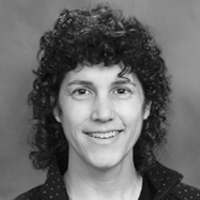Mounts
Mounts are categorized in several areas. There are mounts that are designed for speech generating devices, either the larger ones, of which a lot are going away, or the smaller, newer devices that usually weigh less than 5 pounds. It is also possible to mount computers including notebook styles, but a hot topic these days are tablet computers. There are mounts to address each of these needs. Let’s start with some terminology. Mounts consist of three main portions.
Frame Clamp
First, we have the frame clamp itself. The frame clamp attaches to the frame of the wheelchair. It is designed to fit a specific shape and diameter of the chair. That can be tricky because depending on the mobility base we are attaching to, whether it is an adaptive stroller, a manual chair, or power chair, there are quite a variety of shapes and diameters; sometimes even within one single chair.
Tubing and Joints
We then have the tubing and joints. Within a mounting system, we have some horizontal sections of tubing and vertical sections of tubing. There is typically some type of joint in between, and depending on what angle we use, we can choose the final position of the device.
Mounting Plate
Finally, we have the mounting plate. This is what interfaces directly with whatever we are mounting, such as a communication device or computer. Sometimes on the back of that device we have to have an adapter plate that interfaces with that mounting plate. The mounting plate is generally ordered as part of the mounting system.
Whenever we order a mount, we have to make sure we are include the frame clamp, the tubing and joints, and the mounting plate. We need to know what we are mounting, so we know what mounting plate to order. We also need to know where we are mounting it on the mobility base so that we know exactly what tubing size and diameter and shape that we need.
This is a device adapter in Figure 1. It attaches to the back of that speech generating device, like a Dynavox or a Prentke Romich device. Then the mounting plate attaches to a piece of tubing on the mounting system. These two interface with each other which allow us to connect the device to the mounting system.
